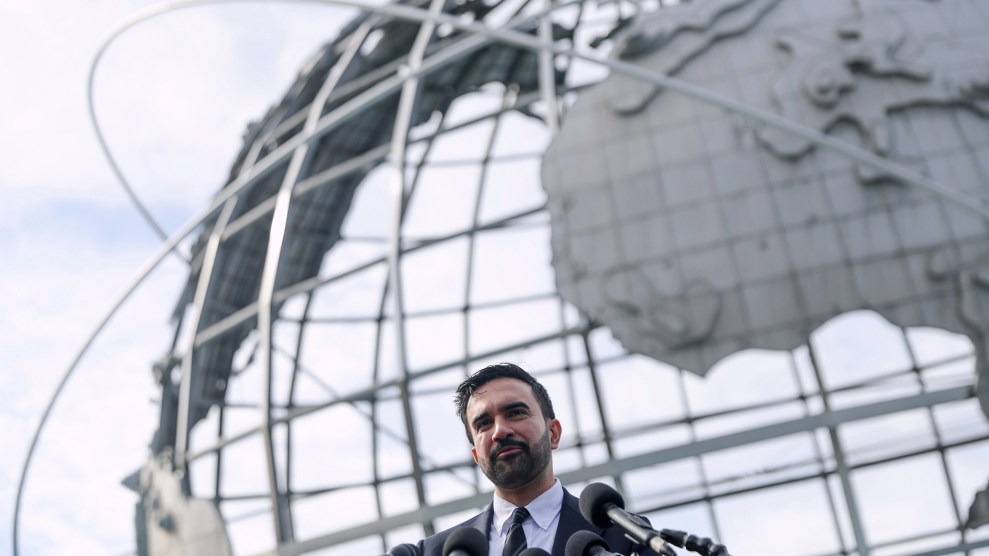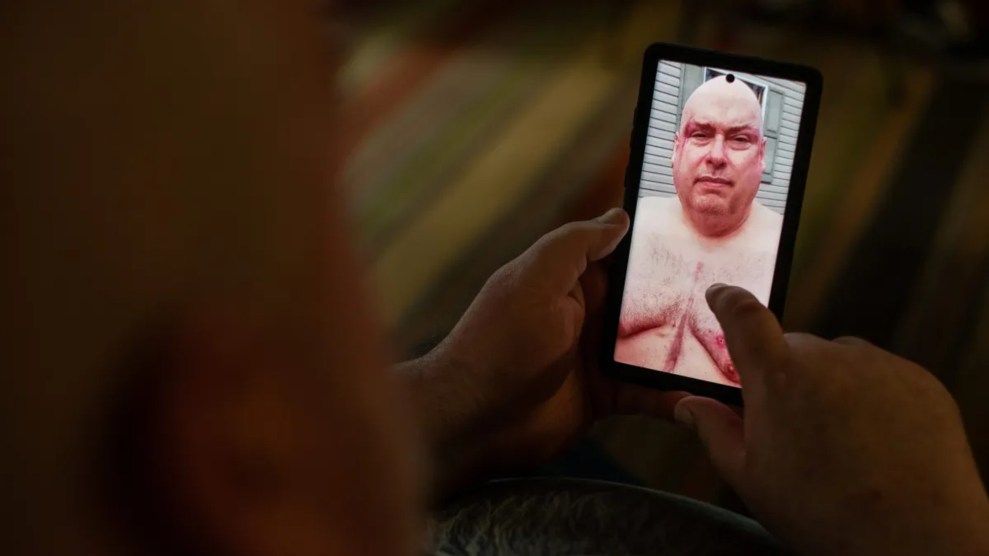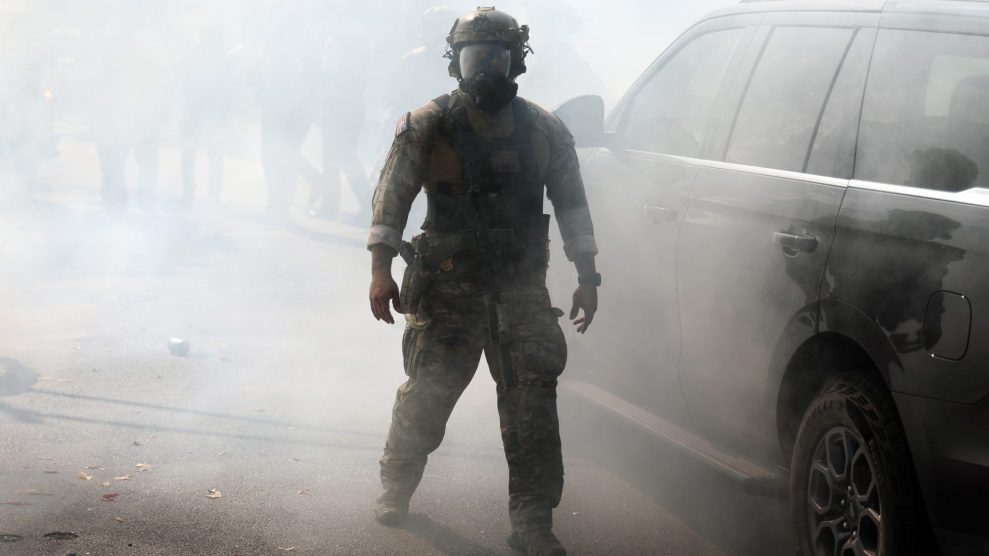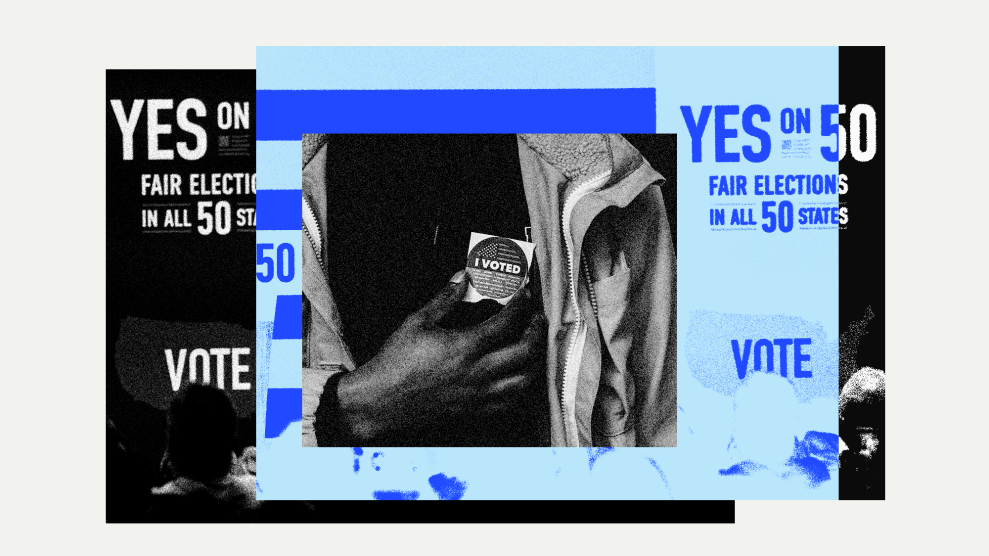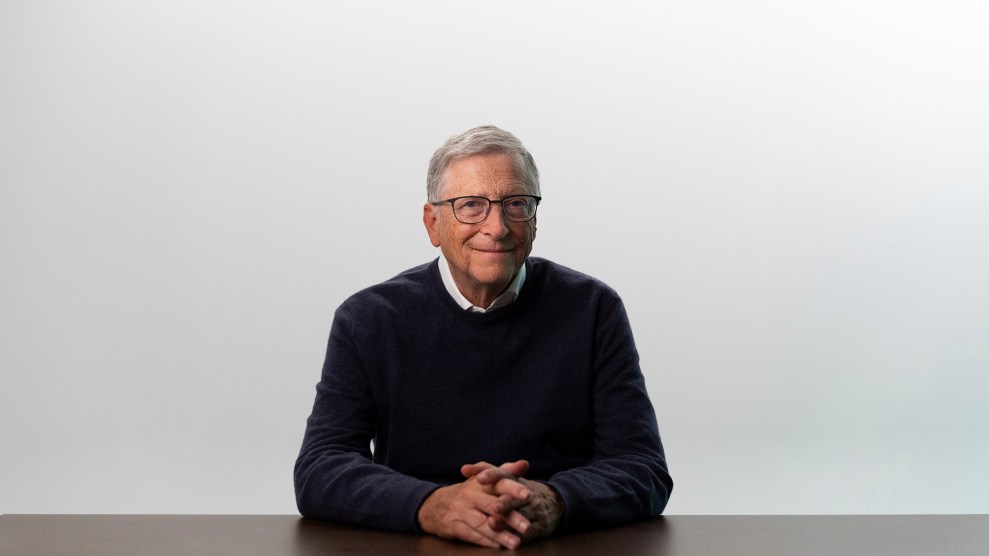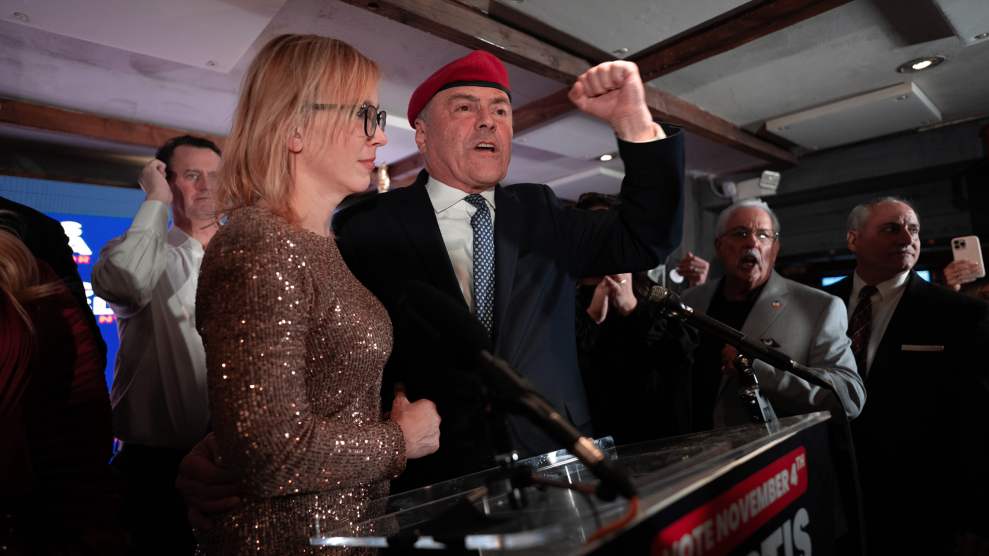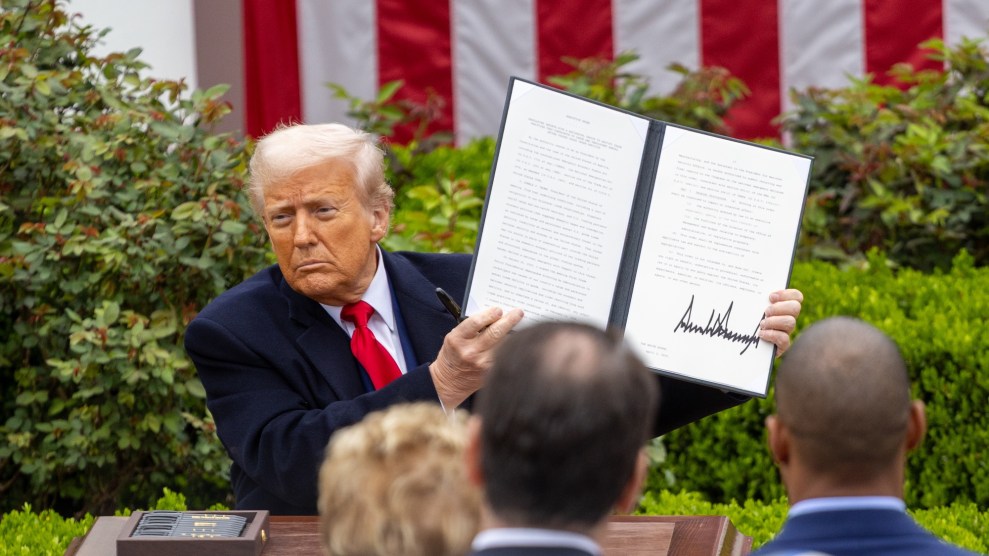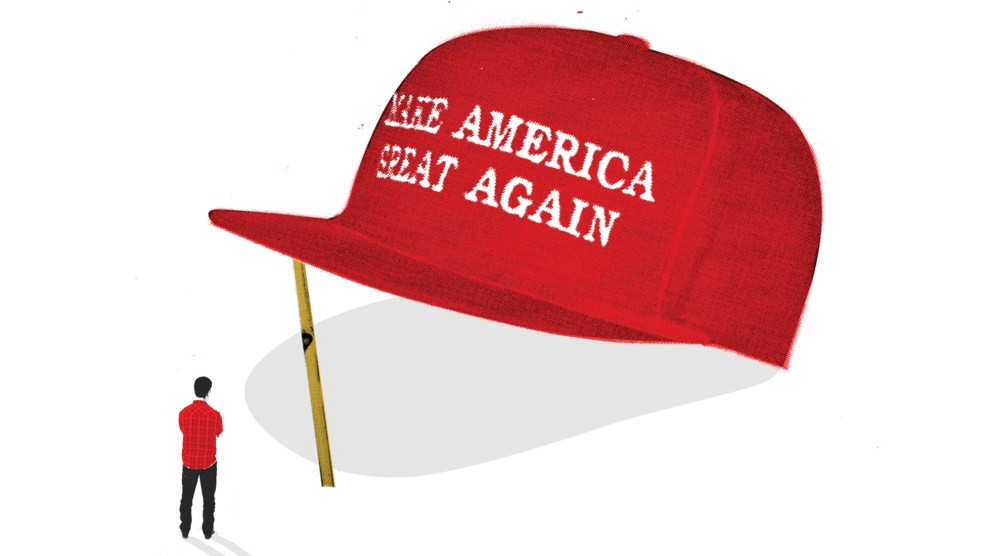
Mike McQuade
This past October, I taught a weeklong seminar on the history of conservatism to honors students from around the state of Oklahoma. In five long days, my nine very engaged students and I got to know each other fairly well. Six were African American women. Then there was a middle-aged white single mother, a white kid who looked like any other corn-fed Oklahoma boy and identified himself as “queer,” and the one straight white male. I’ll call him Peter.
Peter is 21 and comes from a town of about 3,000 souls. It’s 85 percent white, according to the 2010 census, and 1.2 percent African American—which would make for about 34 black folks. “Most people live around the poverty line,” Peter told the class, and hunting is as much a sport as a way to put food on the table.
Peter was one of the brightest students in the class, and certainly the sweetest. He liked to wear overalls to school—and on the last day, in a gentle tweak of the instructor, a red “Make America Great Again” baseball cap. A devout evangelical, he’d preferred former Arkansas Gov. Mike Huckabee at the start of the primary season, but was now behind Donald Trump.
One day the students spent three hours drafting essays about the themes we’d talked about in class. I invited them to continue writing that night so the next morning we could discuss one of their pieces in detail. I picked Peter’s because it was extraordinary. In only eight hours he’d churned out eight pages, eloquent and sharp.
When I asked him if I could discuss his essay in this article, he replied, “That sounds fine with me. If any of my work can be used to help the country with its political turmoil, I say go for it!” Then he sent me a new version with typos corrected and a postelection postscript: “My wishful hope is that my compatriots will have their tempers settled by Trump’s election, and that maybe both sides can learn from the Obama and Trump administrations in order to understand how both sides feel. Then maybe we can start electing more moderate people, like John Kasich and Jim Webb, who can find reasonable commonality on both sides and make government work.” Did I mention he was sweet?
When he read the piece aloud in class that afternoon in October, the class was riveted. Several of the black women said it was the first time they’d heard a Trump supporter clearly set forth what he believed and why. (Though, defying stereotypes, one of these women—an aspiring cop—was also planning to vote for Trump.)
Peter’s essay took off from the main class reading, Corey Robin’s The Reactionary Mind: Conservatism From Edmund Burke to Sarah Palin. Its central argument is that conservative movements across history are united in their devotion to the maintenance of received social hierarchy. Peter, whose essay was titled “Plight of the Redneck,” had a hard time seeing how that applied to the people he knew.
“We all live out in the wilderness, either in the middle of a forest or on a farm,” he wrote. “Some people cannot leave their homes during times of unfortunate weather. Many still dry clothes by hanging them on wires with clothespins outside. These people are nowhere near the top, or even the middle, of any hierarchy. These people are scraping the bottom of the barrel, and they, seemingly, have nothing to benefit from maintaining the system of order that keeps them at the bottom.” His county ended up going about 70 percent for Trump.
Concerning race, Peter wrote, “In Oklahoma, besides Native Americans, there have traditionally been very few minorities. Few blacks have ever lived near the town that I am from…Even in my generation, despite there being a little more diversity, there was no racism, nor was there a reason for racism to exist.” His town’s 34 or so black people might beg to differ, of course; white people’s blindness to racism in their midst is an American tradition. As one of the African American students in the class—I’ll call her Karen—put it, whites in her town see “racism as nonexistent unless they witness it firsthand. And then it almost has to be over the top—undeniable acts of violence like hate crimes or cross burnings on front lawns—before they would acknowledge it as such.” But it’s relevant to the story I’m telling that I’m certain Peter isn’t individually, deliberately racist, and that Karen agrees.
Still, Peter’s thinking might help us frame a central debate on the left about what to make of Trump’s victory. Is it, in the main, a recrudescence of bigotry on American soil—a reactionary scream against a nation less white by the year? Or is it more properly understood as an economically grounded response to the privations that neoliberalism has wracked upon the heartland?
Peter knows where he stands. He remembers multiple factories and small businesses “shutting down or laying off. Next thing you know, half of downtown” in the bigger city eight miles away “became vacant storefronts.” Given that experience, he has concluded, “for those people who have no political voice and come from states that do not matter, the best thing they can do is try to send in a wrecking ball to disrupt the system.”
When Peter finished with that last line, there was a slight gasp from someone in the class—then silence, then applause. They felt like they got it.
I was also riveted by Peter’s account, convinced it might be useful as a counterbalance to glib liberal dismissals of the role of economic decline in building Trumpland. Then I did some research.
According to the 2010 census, the median household income in Peter’s county is a little more than $45,000. By comparison, Detroit’s is about $27,000 and Chicago’s (with a higher cost of living) is just under $49,000. The poverty rate is 17.5 percent in the county and 7.6 percent in Peter’s little town, compared with Chicago’s 22.7 percent. The unemployment rate has hovered around 4 percent.
The town isn’t rich, to be sure. But it’s also not on the “bottom.” Oklahoma on the whole has been rather dynamic economically: Real GDP growth was 2.8 percent in 2014—down from 4.3 percent in 2013, but well above the 2.2 percent nationally. The same was true of other Trump bastions like Texas (5.2 percent growth) and West Virginia (5.1 percent).
Peter, though, perceives the region’s economic history as a simple tale of desolation and disappointment. “Everyone around was poor, including the churches,” he wrote, “and charities were nowhere near (this wasn’t a city, after all), so more people had to use some sort of government assistance. Taxes went up [as] the help became more widespread.”
He was just calling it like he saw it. But it’s striking how much a bright, inquisitive, public-spirited guy can take for granted that just is not so. Oklahoma’s top marginal income tax rate was cut by a quarter point to 5 percent in 2016, the same year lawmakers hurt the working poor by slashing the earned-income tax credit. On the “tax burden” index used by the website WalletHub, Oklahoma’s is the 45th lowest, with rock-bottom property taxes and a mere 4.5 percent sales tax. (On Election Day, Oklahomans voted down a 1-point sales tax increase meant to raise teacher pay, which is 49th in the nation.).
As for government assistance, Oklahoma spends less than 10 percent of its welfare budget on cash assistance. The most a single-parent family of three can get is $292 a month—that’s 18 percent of the federal poverty line. Only 2,469 of the more than 370,000 Oklahomans aged 18 to 64 who live in poverty get this aid. And the state’s Medicaid eligibility is one of the stingiest in the nation, covering only adults with dependent children and incomes below 42 percent of the poverty level—around $8,500 for a family of three.
But while Peter’s analysis is at odds with much of the data, his overall story does fit a national pattern. Trump voters report experiencing greater-than-average levels of economic anxiety, even though they tend have better-than-average incomes. And they are inclined to blame economic instability on the federal government—even, sometimes, when it flows from private corporations. Peter wrote about the sense of salvation his neighbors felt when a Walmart came to town: “Now there were enough jobs, even part-time jobs…But Walmart constantly got attacked by unions nationally and with federal regulations; someone lost their job, or their job became part-time.”
It’s worth noting that if the largest retail corporation in the world has been conspicuously harmed by unions and regulations of late, it doesn’t show in its net profits, which were $14.69 billion in 2015.* And of course, Walmart historically has had a far greater role in shuttering small-town Main Streets than in revitalizing them. But Peter’s neighbors see no reason to resent it for that. He writes, “The majority of the people do not blame the company for their loss because they realize that businesses [are about] making money, and that if they had a business of their own, they would do the same thing.”
It’s not fair to beat up on a sweet 21-year-old for getting facts wrong—especially if, as is likely, these were the only facts he was told. Indeed, teaching the class, I was amazed how even the most liberal students took for granted certain dubious narratives in which they (and much of the rest of the country) were marinated all year long, like the notion that Hillary Clinton was extravagantly corrupt.
Feelings can’t be fact-checked, and in the end, feelings were what Peter’s eloquent essay came down to—what it feels like to belong, and what it feels like to be culturally dispossessed. “After continually losing on the economic side,” he wrote, “one of the few things that you can retain is your identity. What it means, to you, to be an American, your somewhat self-sufficient and isolated way of life, and your Christian faith and values. Your identity and heritage is the very last thing you can cling to…Abortion laws and gay marriage are the two most recent upsets. The vast majority of the state of Oklahoma has opposed both of the issues, and social values cannot be forced by the government.”
On these facts he is correct: In a 2015 poll, 68 percent of Oklahomans called themselves “pro-life,” and only 30 percent supported marriage equality. Until 2016 there were only a handful of abortion providers in the entire state, and the first new clinic to open in 40 years guards its entrance with a metal detector.
Peter thinks he’s not a reactionary. Since that sounds like an insult, I’d like to think so, too. But in writing this piece, I did notice a line in his essay that I had glided over during my first two readings, maybe because I liked him too much to want to be scared by him. “One need only look to the Civil War and the lasting legacies of Reconstruction through to today’s current racism and race issues to see what happens when the federal government forces its morals on dissenting parts of the country.”
The last time I read that, I shuddered. So I emailed Peter. “I say the intrusions were worth it to end slavery and turn blacks into full citizens,” I wrote. “A lot of liberals, even those most disposed to having an open mind to understanding the grievances of people like you and yours, will have a hard time with [your words].”
Peter’s answer was striking. He first objected (politely!) to what he saw as the damning implication behind my observation. Slavery and Reconstruction? “I was using it as an example of government intrusion and how violent and negative the results can be when the government tries to tell people how to think. I take it you saw it in terms of race in politics. The way we look at the same thing shows how big the difference is between our two groups.”
To him, focusing on race was “an attention-grabbing tool that politicians use to their advantage,” one that “really just annoys and angers conservatives more than anything, because it is usually a straw man attack.” He compared it to what “has happened with this election: everyone who votes for Trump must be racist and sexist, and there’s no possible way that anyone could oppose Hillary unless it’s because they’re sexist. Accusing racism or sexism eliminates the possibility of an honest discussion about politics.”
He asked me to imagine “being one of those rednecks under the poverty line, living in a camper trailer on your grandpa’s land, eating about one full meal a day, yet being accused by Black Lives Matter that you are benefiting from white privilege and your life is somehow much better than theirs.”
And that’s when I wanted to meet him halfway: Maybe we could talk about the people in Chicago working for poverty wages and being told by Trump supporters that they were lazy. Or the guy with the tamale cart in front of my grocery store—always in front of my grocery store, morning, noon, and night—who with so much as a traffic violation might find himself among the millions whom Trump intends to immediately deport.
I wanted to meet him halfway, until he started talking about history.
“The reason I used the Civil War and Reconstruction is because it isn’t a secret that Reconstruction failed,” Peter wrote. “It failed and left the South in an extreme poverty that it still hasn’t recovered from.” And besides, “slavery was expensive and the Industrial Revolution was about to happen. Maybe if there had been no war, slavery would have faded peacefully.”
As a historian, I found this remarkable, since it was precisely what all American schoolchildren learned about slavery and Reconstruction for much of the 20th century. Or rather, they did until the civil rights era, when serious scholarship dismantled this narrative, piece by piece. But not, apparently, in Peter’s world. “Until urban liberals move to the rural South and live there for probably a decade or more,” he concluded, “there’s no way to fully appreciate the view.”
This was where he left me plumb at a loss. Liberals must listen to and understand Trump supporters. But what you end up understanding from even the sweetest among them still might chill you to the bone.
Read Peter’s full essay at motherjones.com/oklahoma.
*This sentence has been clarified to include Walmart’s net, not gross, profits in 2015.


